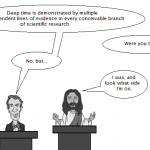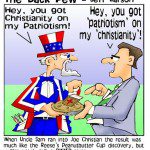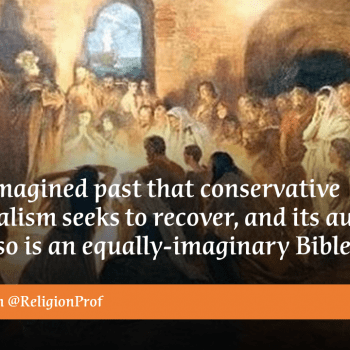I am grateful to IVP Academic for sending me a gratis review copy of Kyle Greenwood's book Scripture and Cosmology. Greenwood's book is not entirely unlike books that I've reviewed before by John Walton, in terms of the ancient data surveyed. Scripture and Cosmology explores Ancient Near Eastern ideas about the Earth, the sky-dome over it, the windows in it, and other such details that should be familiar to readers of the Bible.
What Greenwood offers that is highly distinctive, however, is the combination of a presentation of the literary evidence regarding the ancient cosmology of the Biblical world, and a survey of subsequent reception of this data in eras when new philosophical thought and/or new scientific data led to changes in the view of the cosmos that people held.
Greenwood's perspective on the meaning of the Bible in its context is summed up well on p.102, where he points out that “the biblical authors were not engaged in a systematic correction of the pagan worldviews. We do not see these authors writing apologetical treatises against the scientifically naive viewpoints of their uninspired neighbors. They do not speak of atmospheric pressure systems affecting weather. We do not read about the gravitational pull of planets, the solar orbit of the earth or the earth's rotation on its axis. The texts do not inform us of faraway galaxies, supernova, comets or black holes. In short, the biblical authors wrote according to the best scientific evidence of their time, and observational viewpoint that was best expressed through analogy and phenomenological language.”
I don't share Greenwood's view that it is appropriate, despite the multiple human authors of the Bible, to speak of God as the singular Author (p.9). But I nonetheless appreciate his work on the context of those human authors and the meaning of the text within that context. He also offers useful analogies to help readers grasp nuances and mediating positions even if they are used to thinking in black-and-white terms. A good example is when he uses a classic article on the New Yorker's view of the world, and compares that with what is literally geographically true (p.23). And precisely because we do not share the same view of the Bible, our agreement on the similarities between the worldview of the Biblical authors and their ancient contemporaries, recognizing their clear agreement with one another over against our modern scientific understanding, is all the more significant. But Greenwood's book will likely be especially helpful to those who resist honestly acknowledging these things, precisely because of their commitment to a particular understanding of the implications of the view of Scripture that they and Greenwood share. As Greenwood writes later in the book, “Some Christians…feel threatened by advances in science, which is rather unfortunate…This ought not be. If, as Scripture asserts, God reveals himself in creation, then the more we learn about his wondrous works, the more we learn about the God who fashioned them” (p.205).
If you found my review of Kyle Greenwood's book Scripture and Cosmology helpful, then you should also check out the review of the book on the Patheos blog Jesus Creed.
As I've already said, this series of book reviews is a response to the Ark Encounter which will be opening soon, and it is getting attention even from the New York Times. And so in addition to the book reviews I've been offering, let me also round up some other useful links. Naturalis Historia challenged Ken Ham to send his employees to real science conferences. Joel Anderson looked at the harmful impact of young-earth creationism. Christian Today asked whether the giant ark is an evangelistic supertool or a fundamental(ist) waste of money, and highlighted five questions about creation they think every Christian should ask. Jim Kidder explored what happens when legitimate scientists are cited by young-earth creationist charlatans. Zack Kopplin compared Christian and Muslim forms of creationism (although it should be noted that there is diversity in both traditions). See also Religion Dispatches' new blog on religion and science, The Cubit, as well as the online videos by Michael Dowd.














